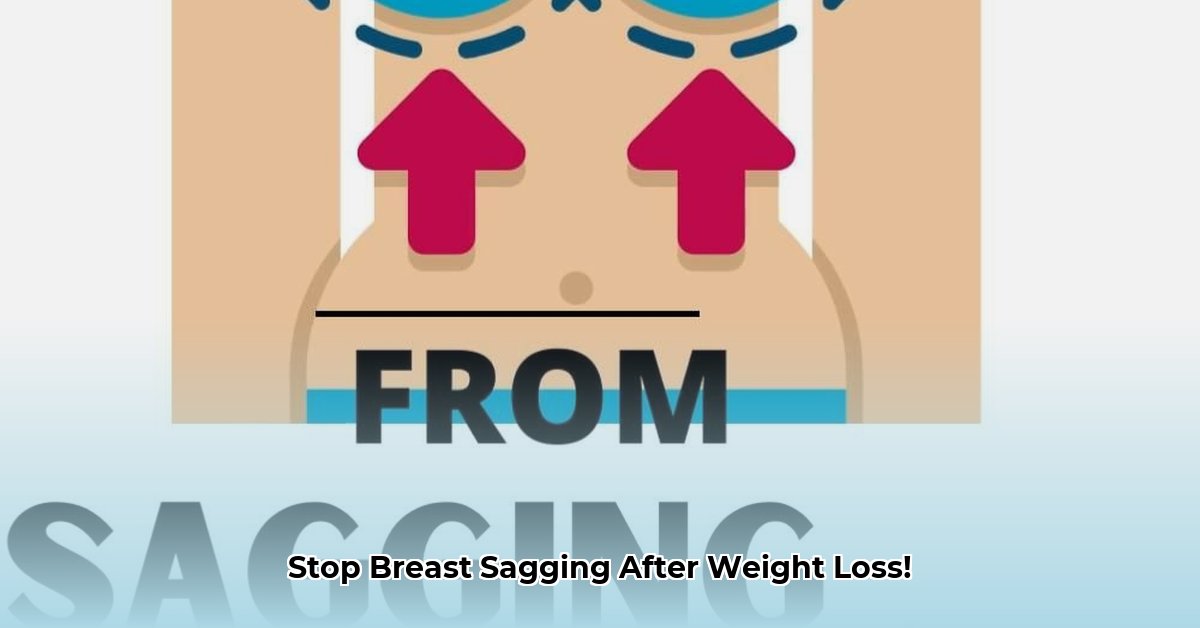
Understanding Breast Sagging After Weight Loss
Losing weight is a significant achievement, but it can sometimes lead to an unexpected side effect: breast sagging. This is a common experience for many women, and understanding the causes and available solutions is crucial for maintaining body confidence and well-being. Let's explore this common concern.
The Science Behind Sagging Breasts
Breast tissue primarily consists of fat, glandular tissue, and connective tissue. Significant weight loss naturally reduces the fat content, resulting in a decrease in breast volume. This volume reduction, coupled with the stretching of the skin and ligaments supporting your breasts, contributes to sagging. The effect is similar to a balloon deflating – the supporting structure weakens, and the skin loses its tautness.
Several factors influence the degree of sagging experienced. Age plays a crucial role, as older skin tends to have less elasticity. Rapid weight loss, compared to gradual weight loss, puts more stress on the skin, increasing the likelihood of sagging. Genetics and initial breast size also contribute; larger breasts may be more prone to sagging after substantial weight loss. It's important to remember that some degree of sagging is a natural part of aging and weight fluctuations, even without weight loss.
Minimizing Sagging During Weight Loss
While you can't entirely prevent breast sagging during weight loss, you can significantly minimize its impact by adopting the following strategies:
Gradual Weight Loss: Aim for a steady, sustainable weight loss rate. Rapid weight loss stretches the skin, increasing the risk of sagging. A gradual approach allows your skin to adapt more readily.
Strength Training: Incorporate exercises that strengthen your chest muscles. Push-ups, chest presses, and resistance band exercises improve muscle tone, providing support to your breasts. Aim for at least 2-3 sessions per week.
Supportive Bras: Wear well-fitting, supportive bras, especially during exercise. Proper support minimizes stretching and helps maintain breast shape. Regular professional bra fittings ensure optimal support.
Healthy Diet and Hydration: A balanced diet rich in protein and antioxidants supports skin elasticity and overall health. Adequate hydration is equally important for maintaining skin health and elasticity.
Addressing Existing Breast Sagging
If you're already experiencing breast sagging, you have several options to consider:
Non-Surgical Options
Topical Treatments: While many creams and lotions claim to improve skin elasticity, scientific evidence supporting their long-term efficacy is limited. While some may offer temporary improvements for some individuals, results are generally modest.
Massage Techniques: Gentle massage might temporarily improve circulation and skin tone. However, effectiveness varies significantly between individuals, and results are usually not dramatic or long-lasting.
Surgical Options
Two main surgical procedures address breast sagging:
Mastopexy (Breast Lift): This surgery removes excess skin and tightens the underlying tissue to lift and reshape the breasts.
Breast Augmentation: This procedure often increases breast size and can be combined with a lift to address sagging. It's crucial to understand that augmentation primarily focuses on increasing volume, not solely lifting.
Choosing the Right Option: The best approach depends on individual needs and preferences. A thorough consultation with a qualified plastic surgeon is essential to discuss the risks and benefits of each procedure and determine the most suitable option.
When to Seek Medical Advice
Consult your doctor or a plastic surgeon if:
- You experience significant breast pain or discomfort.
- Your breast skin is irritated, or you notice signs of infection.
- You have significant concerns about changes to your breast shape or size beyond what you consider acceptable.
Conclusion: Prioritizing Your Well-being
Maintaining a healthy lifestyle is vital for overall health, including breast health. While addressing breast sagging is important for many, focusing on a balanced diet, regular exercise, and positive self-image are fundamental to your well-being. Don't hesitate to consult your doctor or a plastic surgeon for any concerns. Remember, there are many options available to help you feel confident and comfortable in your skin.